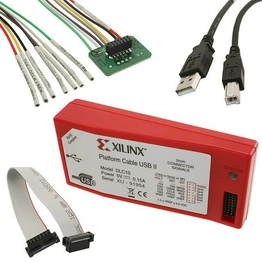Development Kits
Development Suites, also known as Integrated Development Environments (IDEs), are comprehensive software applications that provide a range of tools and features to aid in the development of software applications. They are designed to streamline the software development process by integrating various aspects of coding, debugging, and testing into a single user interface.
Definition:
A Development Suite is a software package that includes a code editor, build automation tools, a compiler or interpreter, and a debugger. It often includes other features such as a version control system, a database manager, and tools for performance profiling and code analysis.
Functions:
1. Code Editing: Provides a text editor with features like syntax highlighting, code completion, and formatting.
2. Build Automation: Automates the process of compiling and linking code, making it easier to build and deploy applications.
3. Debugging: Offers tools to identify and fix errors in the code, often with features like breakpoints, step-through execution, and variable inspection.
4. Version Control: Integrates with version control systems to manage changes to the codebase and collaborate with other developers.
5. Testing: Includes tools for unit testing, integration testing, and performance testing.
6. Code Analysis: Helps identify potential issues and improve code quality through static and dynamic analysis.
7. Documentation: Generates and manages documentation for the code, often automatically from comments and annotations.
Applications:
Development Suites are used across various programming languages and platforms. They are essential for individual developers, teams, and enterprises working on projects ranging from small-scale applications to large-scale, complex systems. They are particularly useful in environments where multiple developers are working on the same codebase, as they facilitate collaboration and code consistency.
Selection Criteria:
When choosing a Development Suite, consider the following criteria:
1. Language Support: Ensure it supports the programming languages you are using.
2. Platform Compatibility: Verify that it runs on your operating system.
3. Feature Set: Check if it includes all the tools you need for your development process.
4. Usability: Look for an intuitive interface and ease of use.
5. Performance: Consider the speed and efficiency of the suite, especially for large projects.
6. Community and Support: A strong community and good support can be invaluable for troubleshooting and learning.
7. Cost: Evaluate the pricing model, whether it's open-source, free, or paid, and whether it fits your budget.
8. Integration Capabilities: Check if it can integrate with other tools and services you use.
9. Customizability: Some developers prefer suites that can be customized to fit their workflow.
10. Updates and Maintenance: Ensure the suite is actively maintained and updated.
In summary, Development Suites are crucial tools for modern software development, offering a comprehensive set of features to enhance productivity, collaboration, and code quality. The choice of a Development Suite should be based on its ability to meet the specific needs of the development project and the preferences of the development team.
Please refer to the product rule book for details.
Definition:
A Development Suite is a software package that includes a code editor, build automation tools, a compiler or interpreter, and a debugger. It often includes other features such as a version control system, a database manager, and tools for performance profiling and code analysis.
Functions:
1. Code Editing: Provides a text editor with features like syntax highlighting, code completion, and formatting.
2. Build Automation: Automates the process of compiling and linking code, making it easier to build and deploy applications.
3. Debugging: Offers tools to identify and fix errors in the code, often with features like breakpoints, step-through execution, and variable inspection.
4. Version Control: Integrates with version control systems to manage changes to the codebase and collaborate with other developers.
5. Testing: Includes tools for unit testing, integration testing, and performance testing.
6. Code Analysis: Helps identify potential issues and improve code quality through static and dynamic analysis.
7. Documentation: Generates and manages documentation for the code, often automatically from comments and annotations.
Applications:
Development Suites are used across various programming languages and platforms. They are essential for individual developers, teams, and enterprises working on projects ranging from small-scale applications to large-scale, complex systems. They are particularly useful in environments where multiple developers are working on the same codebase, as they facilitate collaboration and code consistency.
Selection Criteria:
When choosing a Development Suite, consider the following criteria:
1. Language Support: Ensure it supports the programming languages you are using.
2. Platform Compatibility: Verify that it runs on your operating system.
3. Feature Set: Check if it includes all the tools you need for your development process.
4. Usability: Look for an intuitive interface and ease of use.
5. Performance: Consider the speed and efficiency of the suite, especially for large projects.
6. Community and Support: A strong community and good support can be invaluable for troubleshooting and learning.
7. Cost: Evaluate the pricing model, whether it's open-source, free, or paid, and whether it fits your budget.
8. Integration Capabilities: Check if it can integrate with other tools and services you use.
9. Customizability: Some developers prefer suites that can be customized to fit their workflow.
10. Updates and Maintenance: Ensure the suite is actively maintained and updated.
In summary, Development Suites are crucial tools for modern software development, offering a comprehensive set of features to enhance productivity, collaboration, and code quality. The choice of a Development Suite should be based on its ability to meet the specific needs of the development project and the preferences of the development team.
Please refer to the product rule book for details.
Categories
Datasheets
HW-USB-II-G Datasheet
HISPARKT1 Datasheet
RP2040 Datasheet
RASPBERRY PI PICO Datasheet
RASPBERRY PI5 ACTIVE COOLER Datasheet
RASPBERRY PI3 Datasheet
FRDM-K64F Datasheet
RASPBERRY PI 5/8GB Datasheet
AC7Z020 Datasheet
RASPBERRY PI ZERO 2 W Datasheet
AX7Z020B Datasheet
CM4102008 Datasheet
CM4001008 Datasheet
LP-MSPM0C1104 Datasheet
Article

What Is a Potential Transformer (PT)?
Table of Contents + 1. Basic Definition & Background 1.1. What Is a Potential Transformer? 1.2. PT vs Ordinary Transformer vs Instrument Transformer 1.3. Applications of Potential Transformers / What Are Potential Transformers Used For?2. Operation Principle 2.1. Working Principle of a PT / VT 2.2. Voltage Ratio & Turn Ratio Relationship 2.3....
Learn More >
ICkey Named Intel IoT Solution Aggregator, Marking Strategic Milestone in Partnership
ICkey, a leading distributor of electronic components and provider of digital supply chain solutions, has entered into a strategic partnership with global semiconductor giant Intel, becoming an official Intel IoT Solution Aggregator. To commemorate this milestone, the two companies held a signing ceremony under the theme “Smart Connectivity, Powering the Future.” During the ceremony, Bi Fenglei, Senior ...
Learn More >

ICkey Successfully Lists on Shenzhen Stock Exchange ChiNext Board, Empowering Innovation in the Electronics Industry
On September 30, 2025, ICkey (Shanghai) Internet & Technology Co., Ltd. (ICkey) announced its successful listing on the ChiNext Board of the Shenzhen Stock Exchange under the stock code 301563. As a leading vertical B2B supply chain platform in the electronic components sector, ICkey supports the R&D, production, and procurement needs of the electronics manufacturing industry - specifically targeting small and medium-b...
Learn More >







_1755229542018.jpg)


















